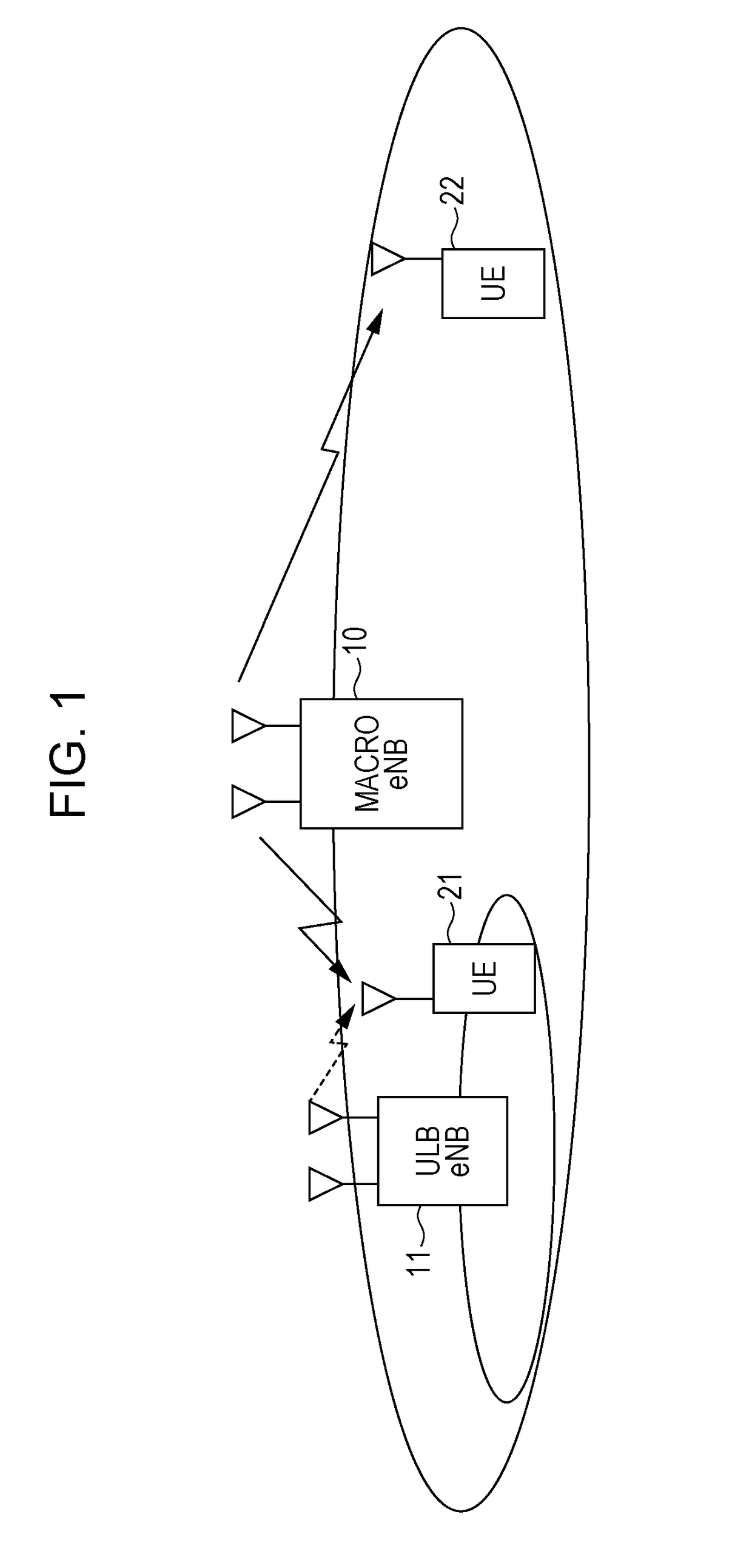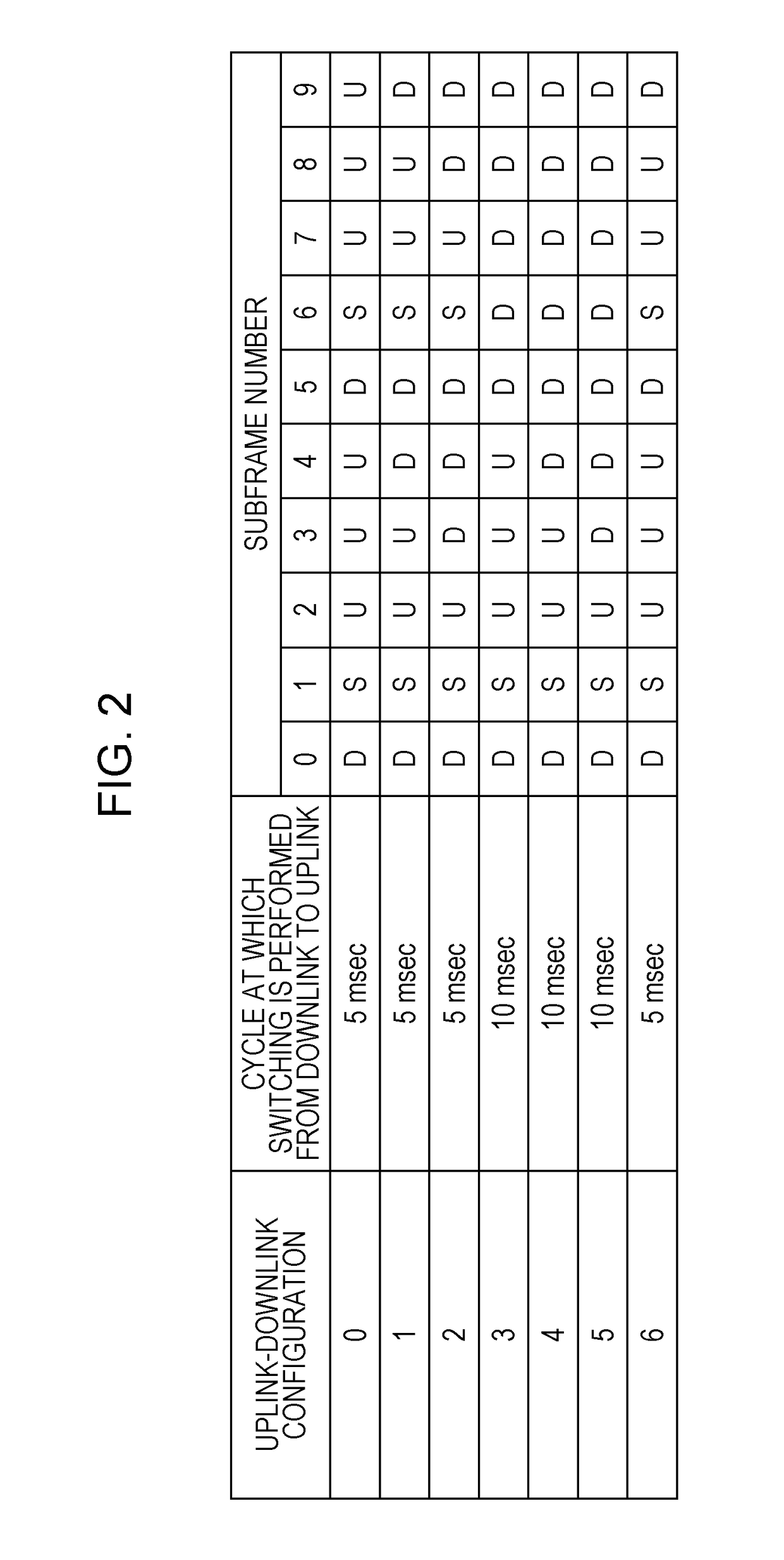Base station apparatus and terminal device
a terminal device and base station technology, applied in the direction of orthogonal multiplex, multiplex communication, transmission path division, etc., can solve the problem of limit of an available frequency band, and achieve the effect of efficient sharing of information
- Summary
- Abstract
- Description
- Claims
- Application Information
AI Technical Summary
Benefits of technology
Problems solved by technology
Method used
Image
Examples
first embodiment
1. First Embodiment
[0036]Hereinafter, an embodiment will be described with reference to the drawings. FIG. 1 illustrates an example of a structure of a system according to the present invention. The system includes a macro base station apparatus 10, a ULB base station apparatus 11, and terminal devices 21 and 22. The number of terminal devices (terminals, mobile terminals, mobile stations, or user equipment (UE)) is not limited to 2, and the number of antennas of each device may be 1, or may be plural in number. It is assumed that the macro base station apparatus 10 performs communication using a so-called licensed band of which permission for use is gained by a country or a locality where a radio communication operator provides services and the ULB base station apparatus 11 performs communication using a so-called unlicensed band which does not require the permission for use by the country or locality, but the present invention is not limited to this example. For example, the macro...
modification example 1 of first embodiment
[0059]In the present modification example, structure examples of the ULB base station apparatus and the terminal device are the same as those of the first embodiment, and are respectively illustrated in FIGS. 4 and 6. A structure example of the DL signal generation unit 101 of the ULB base station apparatus is also the same as that of the first embodiment, and is illustrated in FIG. 5. Thus, only different processes will be described in the present modification example, and the description of the same processes will be omitted.
[0060]In the present modification example, the CS determination unit 106 and the synchronization signal multiplexing units 1013-1 and 1013-2 of the ULB base station apparatus are different from those of the first embodiment. The CS determination unit 106 determines whether or not another system uses the ULB-CC in the subframe of the carrier sense. Here, although it has been described in the first embodiment that the carrier sense is performed during all the pe...
modification example 2 of first embodiment
[0068]In the present modification example, structure examples of the ULB base station apparatus and the terminal device are the same as those of the first embodiment, and are respectively illustrated in FIGS. 4 and 6. A structure example of the DL signal generation unit 101 of the ULB base station apparatus is also the same as that of the first embodiment, and is illustrated in FIG. 5. Thus, only different processes will be described in the present modification example, and the description of the same processes will be omitted.
[0069]In the present modification example, the PSS / SSS is transmitted by the same method as that of Modification Example 1 of the first embodiment, and is allocated to the last OFDM symbol of the subframe of the carrier sense. Here, the UL signal generation unit 211 of the terminal device is different from that of Modification Example 1 of the embodiment. The UL signal generation unit 211 generates a transmit signal of the uplink based on the information of th...
PUM
 Login to View More
Login to View More Abstract
Description
Claims
Application Information
 Login to View More
Login to View More - R&D
- Intellectual Property
- Life Sciences
- Materials
- Tech Scout
- Unparalleled Data Quality
- Higher Quality Content
- 60% Fewer Hallucinations
Browse by: Latest US Patents, China's latest patents, Technical Efficacy Thesaurus, Application Domain, Technology Topic, Popular Technical Reports.
© 2025 PatSnap. All rights reserved.Legal|Privacy policy|Modern Slavery Act Transparency Statement|Sitemap|About US| Contact US: help@patsnap.com



